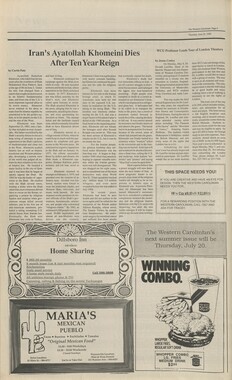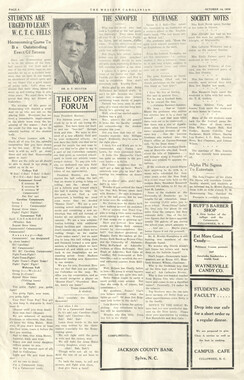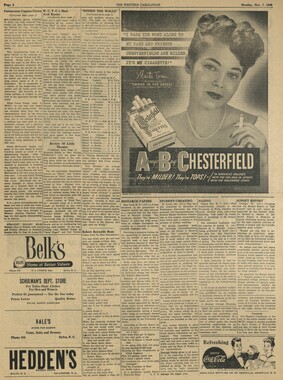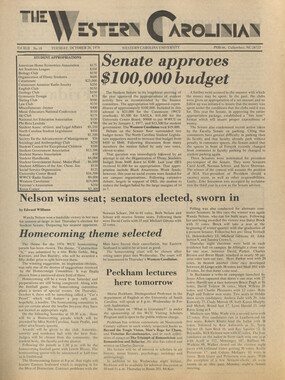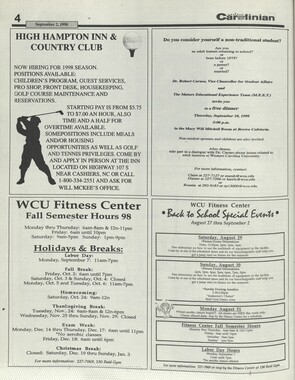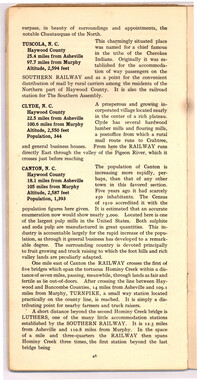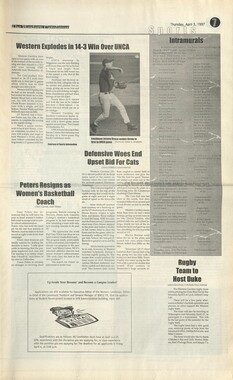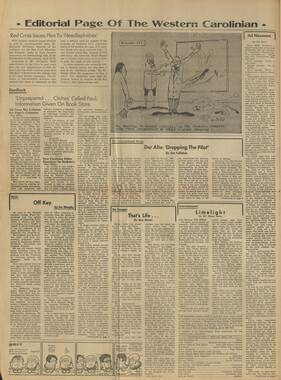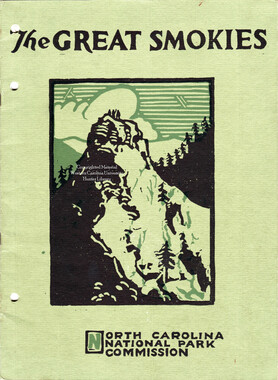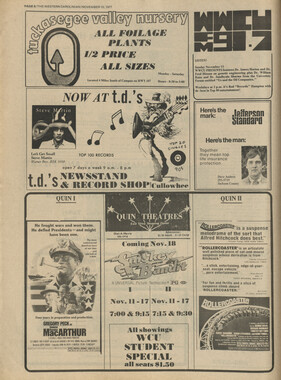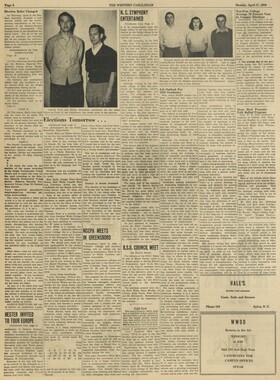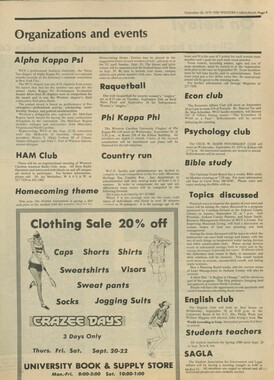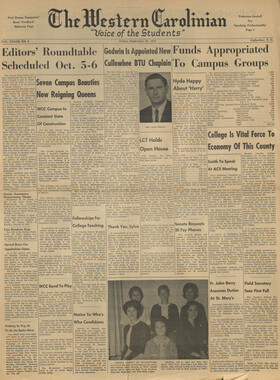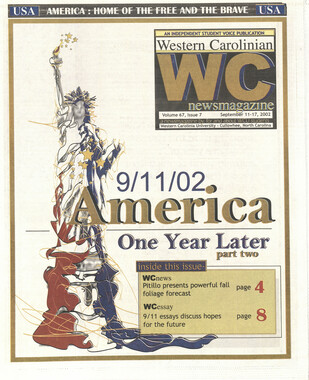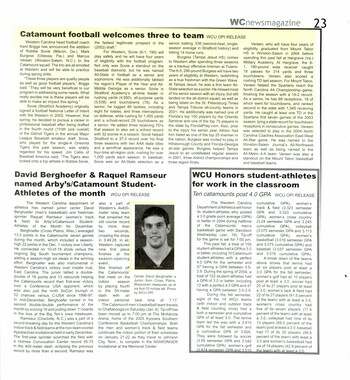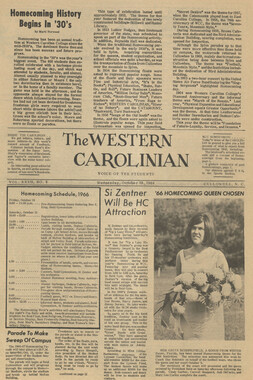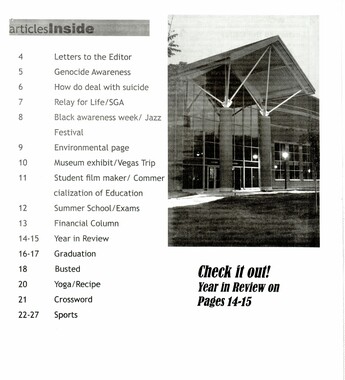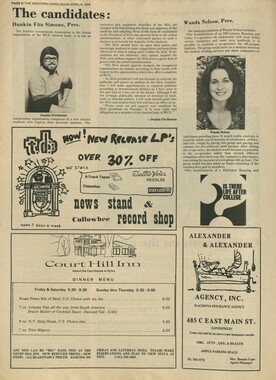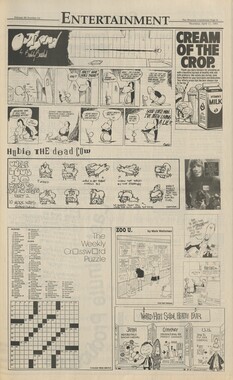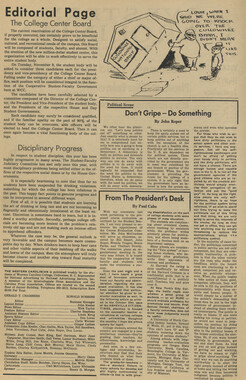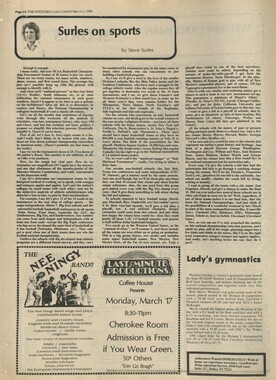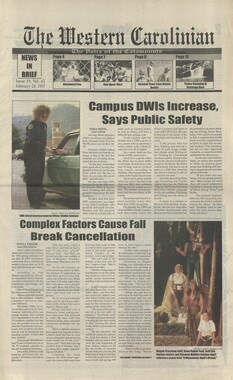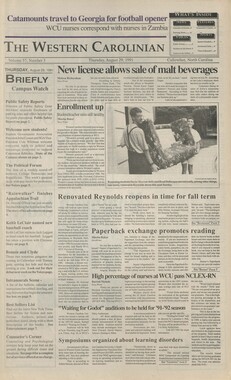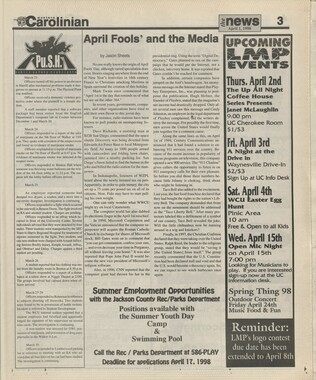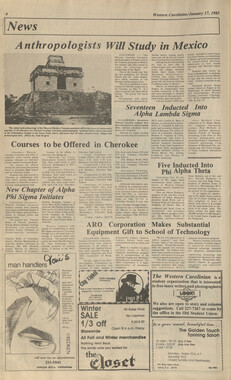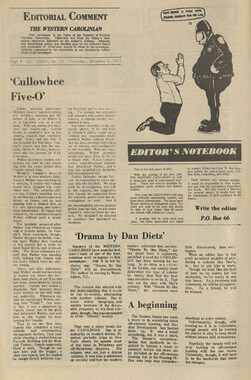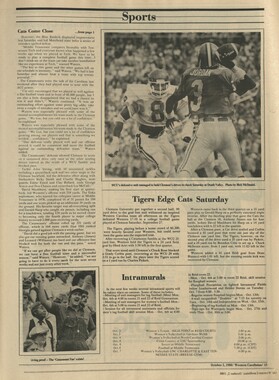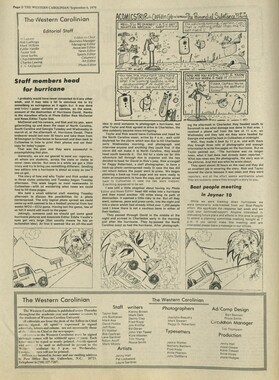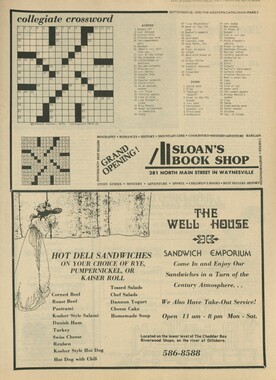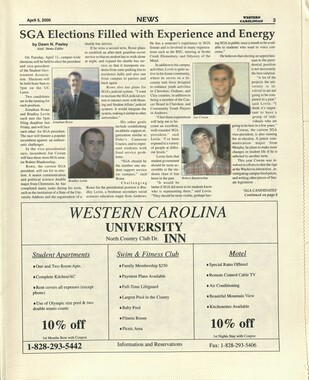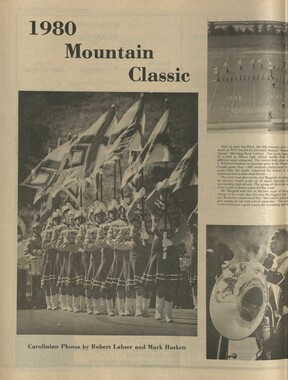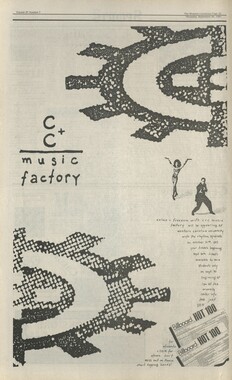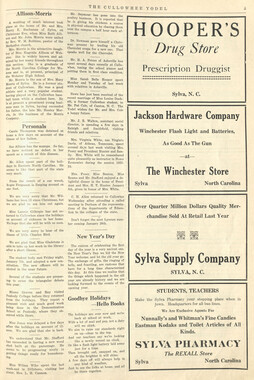Western Carolina University (20)
View all
- Canton Champion Fibre Company (2308)
- Cherokee Traditions (291)
- Civil War in Southern Appalachia (165)
- Craft Revival (1942)
- Great Smoky Mountains - A Park for America (2946)
- Highlights from Western Carolina University (430)
- Horace Kephart (941)
- Journeys Through Jackson (159)
- LGBTQIA+ Archive of Jackson County (85)
- Oral Histories of Western North Carolina (314)
- Picturing Appalachia (6873)
- Stories of Mountain Folk (413)
- Travel Western North Carolina (160)
- Western Carolina University Fine Art Museum Vitreograph Collection (129)
- Western Carolina University Herbarium (92)
- Western Carolina University: Making Memories (738)
- Western Carolina University Publications (2491)
- Western Carolina University Restricted Electronic Theses and Dissertations (146)
- Western North Carolina Regional Maps (71)
- World War II in Southern Appalachia (131)
University of North Carolina Asheville (6)
View all
- Allanstand Cottage Industries (62)
- Appalachian National Park Association (53)
- Bennett, Kelly, 1890-1974 (1463)
- Berry, Walter (76)
- Brasstown Carvers (40)
- Carver, George Washington, 1864?-1943 (26)
- Cathey, Joseph, 1803-1874 (1)
- Champion Fibre Company (233)
- Champion Paper and Fibre Company (297)
- Cherokee Indian Fair Association (16)
- Cherokee Language Program (22)
- Crowe, Amanda (40)
- Edmonston, Thomas Benton, 1842-1907 (7)
- Ensley, A. L. (Abraham Lincoln), 1865-1948 (275)
- Fromer, Irving Rhodes, 1913-1994 (70)
- George Butz (BFS 1907) (46)
- Goodrich, Frances Louisa (120)
- Grant, George Alexander, 1891-1964 (96)
- Heard, Marian Gladys (60)
- Kephart, Calvin, 1883-1969 (15)
- Kephart, Horace, 1862-1931 (313)
- Kephart, Laura, 1862-1954 (39)
- Laney, Gideon Thomas, 1889-1976 (439)
- Masa, George, 1881-1933 (61)
- McElhinney, William Julian, 1896-1953 (44)
- Niggli, Josephina, 1910-1983 (10)
- North Carolina Park Commission (105)
- Osborne, Kezia Stradley (9)
- Owens, Samuel Robert, 1918-1995 (11)
- Penland Weavers and Potters (36)
- Roberts, Vivienne (15)
- Roth, Albert, 1890-1974 (142)
- Schenck, Carl Alwin, 1868-1955 (1)
- Sherrill's Photography Studio (2565)
- Southern Highland Handicraft Guild (127)
- Southern Highlanders, Inc. (71)
- Stalcup, Jesse Bryson (46)
- Stearns, I. K. (213)
- Thompson, James Edward, 1880-1976 (226)
- United States. Indian Arts and Crafts Board (130)
- USFS (683)
- Vance, Zebulon Baird, 1830-1894 (1)
- Weaver, Zebulon, 1872-1948 (58)
- Western Carolina College (230)
- Western Carolina Teachers College (282)
- Western Carolina University (2008)
- Western Carolina University. Mountain Heritage Center (18)
- Whitman, Walt, 1819-1892 (10)
- Wilburn, Hiram Coleman, 1880-1967 (73)
- Williams, Isadora (3)
- Cain, Doreyl Ammons (0)
- Crittenden, Lorraine (0)
- Rhodes, Judy (0)
- Smith, Edward Clark (0)
- Appalachian Region, Southern (2569)
- Asheville (N.C.) (1923)
- Avery County (N.C.) (26)
- Blount County (Tenn.) (195)
- Buncombe County (N.C.) (1672)
- Cherokee County (N.C.) (283)
- Clay County (N.C.) (555)
- Graham County (N.C.) (236)
- Great Smoky Mountains National Park (N.C. and Tenn.) (519)
- Haywood County (N.C.) (3569)
- Henderson County (N.C.) (70)
- Jackson County (N.C.) (4912)
- Knox County (Tenn.) (35)
- Knoxville (Tenn.) (13)
- Lake Santeetlah (N.C.) (10)
- Macon County (N.C.) (420)
- Madison County (N.C.) (215)
- McDowell County (N.C.) (39)
- Mitchell County (N.C.) (132)
- Polk County (N.C.) (35)
- Qualla Boundary (982)
- Rutherford County (N.C.) (76)
- Swain County (N.C.) (2182)
- Transylvania County (N.C.) (270)
- Watauga County (N.C.) (12)
- Waynesville (N.C.) (86)
- Yancey County (N.C.) (72)
- Aerial Photographs (3)
- Aerial Views (60)
- Albums (books) (4)
- Articles (1)
- Artifacts (object Genre) (228)
- Bibliographies (1)
- Biography (general Genre) (2)
- Cards (information Artifacts) (38)
- Clippings (information Artifacts) (191)
- Copybooks (instructional Materials) (3)
- Crafts (art Genres) (622)
- Depictions (visual Works) (21)
- Design Drawings (1)
- Drawings (visual Works) (185)
- Envelopes (73)
- Exhibitions (events) (1)
- Facsimiles (reproductions) (1)
- Fiction (general Genre) (4)
- Financial Records (12)
- Fliers (printed Matter) (67)
- Glass Plate Negatives (381)
- Guidebooks (2)
- Internegatives (10)
- Interviews (815)
- Land Surveys (102)
- Letters (correspondence) (1013)
- Manuscripts (documents) (618)
- Maps (documents) (177)
- Memorandums (25)
- Minutes (administrative Records) (59)
- Negatives (photographs) (6090)
- Newsletters (1290)
- Newspapers (2)
- Notebooks (8)
- Occupation Currency (1)
- Paintings (visual Works) (1)
- Pen And Ink Drawings (1)
- Periodicals (193)
- Personal Narratives (10)
- Photographs (12976)
- Plans (maps) (1)
- Poetry (5)
- Portraits (4568)
- Postcards (329)
- Programs (documents) (181)
- Publications (documents) (2443)
- Questionnaires (65)
- Relief Prints (26)
- Sayings (literary Genre) (1)
- Scrapbooks (282)
- Sheet Music (2)
- Slides (photographs) (402)
- Songs (musical Compositions) (2)
- Sound Recordings (796)
- Specimens (92)
- Speeches (documents) (18)
- Tintypes (photographs) (8)
- Transcripts (322)
- Video Recordings (physical Artifacts) (23)
- Text Messages (0)
- A.L. Ensley Collection (275)
- Appalachian Industrial School Records (7)
- Appalachian National Park Association Records (336)
- Axley-Meroney Collection (2)
- Bayard Wootten Photograph Collection (20)
- Bethel Rural Community Organization Collection (7)
- Blumer Collection (5)
- C.W. Slagle Collection (20)
- Canton Area Historical Museum (2110)
- Carlos C. Campbell Collection (462)
- Cataloochee History Project (64)
- Cherokee Studies Collection (4)
- Daisy Dame Photograph Album (5)
- Daniel Boone VI Collection (1)
- Doris Ulmann Photograph Collection (112)
- Elizabeth H. Lasley Collection (1)
- Elizabeth Woolworth Szold Fleharty Collection (4)
- Frank Fry Collection (95)
- George Masa Collection (173)
- Gideon Laney Collection (452)
- Hazel Scarborough Collection (2)
- Hiram C. Wilburn Papers (28)
- Historic Photographs Collection (236)
- Horace Kephart Collection (861)
- Humbard Collection (33)
- Hunter and Weaver Families Collection (1)
- I. D. Blumenthal Collection (4)
- Isadora Williams Collection (4)
- Jesse Bryson Stalcup Collection (47)
- Jim Thompson Collection (224)
- John B. Battle Collection (7)
- John C. Campbell Folk School Records (80)
- John Parris Collection (6)
- Judaculla Rock project (2)
- Kelly Bennett Collection (1482)
- Love Family Papers (11)
- Major Wiley Parris Civil War Letters (3)
- Map Collection (12)
- McFee-Misemer Civil War Letters (34)
- Mountain Heritage Center Collection (4)
- Norburn - Robertson - Thomson Families Collection (44)
- Pauline Hood Collection (7)
- Pre-Guild Collection (2)
- Qualla Arts and Crafts Mutual Collection (12)
- R.A. Romanes Collection (681)
- Rosser H. Taylor Collection (1)
- Samuel Robert Owens Collection (94)
- Sara Madison Collection (144)
- Sherrill Studio Photo Collection (2558)
- Smoky Mountains Hiking Club Collection (616)
- Stories of Mountain Folk - Radio Programs (374)
- The Reporter, Western Carolina University (510)
- Venoy and Elizabeth Reed Collection (16)
- WCU Gender and Sexuality Oral History Project (32)
- WCU Mountain Heritage Center Oral Histories (25)
- WCU Oral History Collection - Mountain People, Mountain Lives (71)
- WCU Students Newspapers Collection (1923)
- Western North Carolina Tomorrow Black Oral History Project (69)
- William Williams Stringfield Collection (2)
- Zebulon Weaver Collection (109)
- African Americans (390)
- Appalachian Trail (35)
- Artisans (521)
- Cherokee art (84)
- Cherokee artists -- North Carolina (10)
- Cherokee language (21)
- Cherokee pottery (101)
- Cherokee women (208)
- Church buildings (189)
- Civilian Conservation Corps (U.S.) (111)
- College student newspapers and periodicals (2012)
- Dams (107)
- Dance (1023)
- Education (222)
- Floods (61)
- Folk music (1015)
- Forced removal, 1813-1903 (2)
- Forest conservation (220)
- Forests and forestry (1184)
- Gender nonconformity (4)
- Great Smoky Mountains National Park (N.C. and Tenn.) (181)
- Hunting (45)
- Landscape photography (25)
- Logging (119)
- Maps (83)
- Mines and mineral resources (8)
- North Carolina -- Maps (18)
- Paper industry (38)
- Postcards (255)
- Pottery (135)
- Railroad trains (72)
- Rural electrification -- North Carolina, Western (3)
- School integration -- Southern States (2)
- Segregation -- North Carolina, Western (5)
- Slavery (5)
- Sports (452)
- Storytelling (243)
- Waterfalls -- Great Smoky Mountains (N.C. and Tenn.) (66)
- Weaving -- Appalachian Region, Southern (280)
- Wood-carving -- Appalachian Region, Southern (328)
- World War, 1939-1945 (173)
Western Carolinian Volume 85 Number 01
Item
Item’s are ‘child’ level descriptions to ‘parent’ objects, (e.g. one page of a whole book).
-
-
B6 January 26, 2017 ARTS AND ENTERTAINMENT The Western Carolinian Women Painters of the Southeast on display Madeline Moore Junior Editor On Jan. 17, the Bardo Arts Center opened . the Women Painters of the Southeast exhibit showcasing paintings from their permanent collection. Paintings by female artists located throughout the south- eastern United States including Mary Althea Parker, Connie Bostic, . Marie Hudson, Anna Jensen, Barbara Fisher, Diane Withrow Coyle, Margaret Curtis, Linda Larsen, Ann Ropp, Mary Charles Griffin and Janie McWhirter make up this wonderfully diverse exhibit. The art displayed provides a wide array of styles and artistic visions from simple to complex, traditional to modern, abstract to real- istic, and everywhere in between. ; Parkers three ab- stract paintings, Still Life #2, Untitled and Wood Forms, give off earthy vibes with natu- ral color palettes rang- ing from vibrant shades to muted neutrals to one that is wintery and almost monochromatic. The pieces have visible textures due to the use of layered brushstrokes, which provides more depth to their seemingly simple appearances. Griffin and Mc- Whirters paintings also incorporate vibrant but earthy tones. Griffins abstract, untitled piece made up of four canvases seems to become more complex the longer you look at it, although the long, smooth and simple brushstrokes would at first glance suggest otherwise. McWhirters painting, Untitled Flo- ral, appears to be more reminiscent of blood cells and bacteria that you would see animated in a biology class than a floral print, but is interesting and beautiful nonetheless. Fishers painting, Me- ander, .is the most tradi- tional in terms of typical Appalachian folk-style art. Mini squares with Connie Bostics Untitled. Mary Althea Parker's Still Life #2. their own little pictures in each one seem to tell a story of tradition and family. Bostics untitled paint- ing also incorporates a more traditional paint- ing style with a split beach scene that bla- tantly displays a con- trast of lightness versus darkness, but that could also represent some- thing more since the darkness takes up the majority of the canvas. Potentially, it could be representing themes of tourists versus locals or idea versus reality. In contrast to the na- ture themes that seem to be present in some of the paintings, Hudsons A Different View shows a cityscape instead. This rather unembellished scene gives off a melan- choly and heavy feeling with the simple figure of a girl resting in the middle of a drooping sky. Its hard to look away from this painting after staring for a few mo- ments. It feels asif you are getting deeper into the scene the more you look and contemplate this piece. | Some of the pieces in the exhibit are more realistic, such as Curtis End of Empire, depict- ing a disturbing scene of a young boy laying naked on the ground and a grandmother- figure standing next to him. The scene includes complex and hyper-real- istic shadows streaming through a slated porch structure leaving you in awe at the incredible technique it must have taken to get all of that right, but also curious as to the concerning story being created. Larsens painting, Untitled (man), also takes a more realistic approach with an overall muted aspect. Muddled jines and cool colors make for a more hazy and relaxing scene of a man enjoying a smoke, but also has an almost exhausted undertone. Curtis other work in the exhibit, A A Bun- ting, becomes more dis- turbing and uncomfort- able the longer you look at it although it is hard to-take your eyes off of it. The sketch of a little girl is similar to what you would see in a storybook, but the watermarked legs extending from the bottom of the sketch and the expression on the girls face give the child- like feel a creepier and unsettling vibe. Similar in style is Ropps piece, For Connie, but with a less disturbing impres- sion. E-True Hollywood Story Candy-O, Jensens painting in the exhibit, is perhaps one of the most eye-catching in the col- lection. The bright colors and distinct lines draw attention to the presum- ably drunk female figure that is the subject of the piece. Upon closer inspection, it can be seen that small portions of the picture use glittery paint, such as the wom- ans shoes and nails. Coyles painting, The Death of Dionysus, is another attention- grabbing piece in the exhibit, showing a Greek statue-like figure with a modern twist and simple 2-D colors and back- grounds. Dionysus is the Greek god of wine and agriculture, making one possible interpretation of the painting to bea commentary on the food and agriculture industry moving towards indus- trialization. Overall, the exhibit was incredibly impres- sive and definitely worth more than one visit. The Women Painters of the Southeast exhibit will be on display in the Fine Art Museum of the Bar- do Arts Center through March 24. Admissions are free but donations are appreciated. Western Carolinas Fine Art Museum is open Monday through Wednesday from 10 a.m. to 4 p.m., Thursday from 10. a.m. to 7 p.m. and Friday from 10 a.m. to 4 p.m. For more informa- tion about this exhibit or future exhibits, you can contact the Fine Art Museum at 828-227-3591. Photo by Gabraella Witter/STAFF Photo by Gabraella Witter/STAFF Linda Larsons Untitled (Man) Photo by Gabraella Witter/STAFF Barbara Fisher's Meander. Margaret Curtis End of Empire.
Object
Object’s are ‘parent’ level descriptions to ‘children’ items, (e.g. a book with pages).
-
The Western Carolinian is Western Carolina University's student-run newspaper. The paper was published as the Cullowhee Yodel from 1924 to 1931 before changing its name to The Western Carolinian in 1933.
-
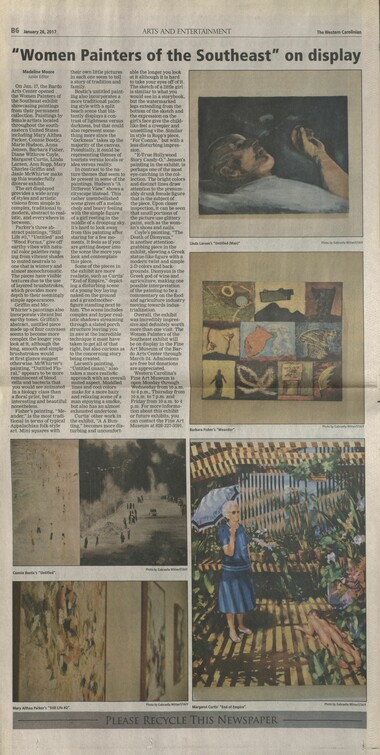

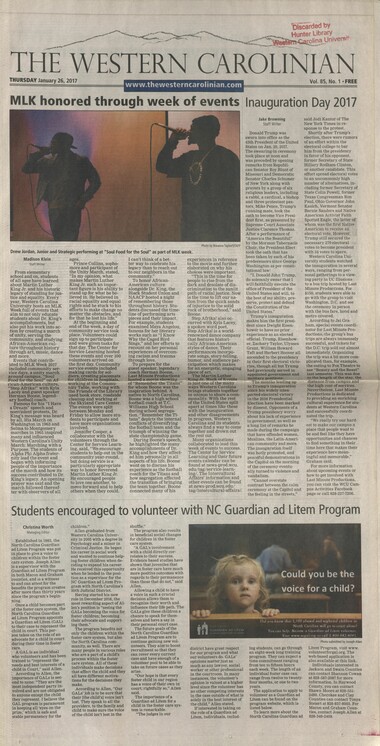
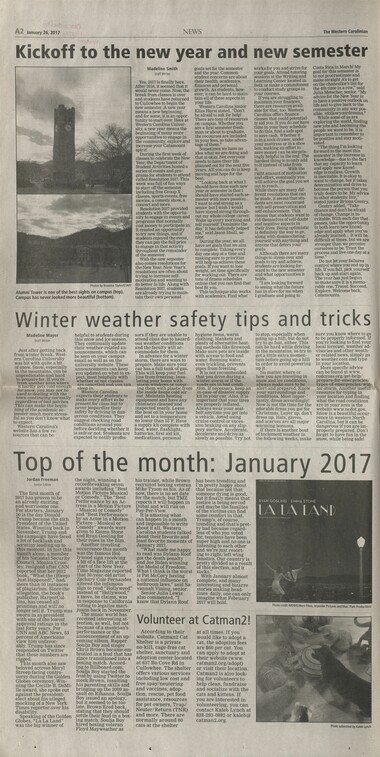

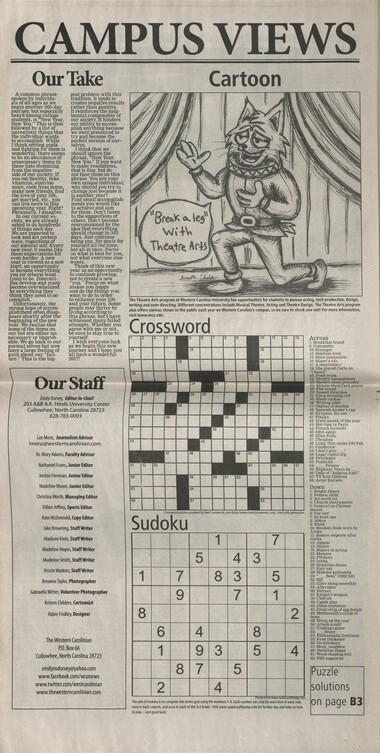


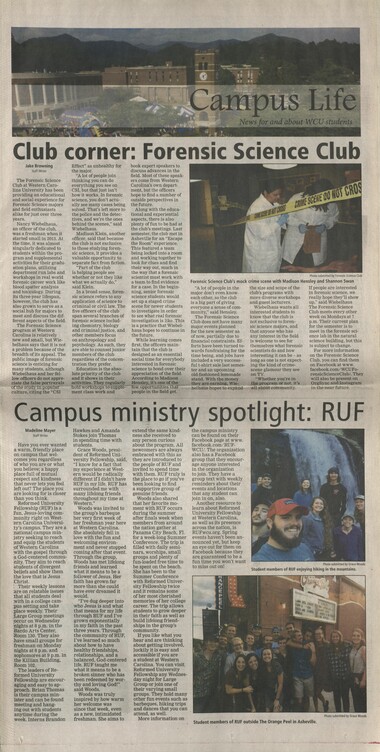
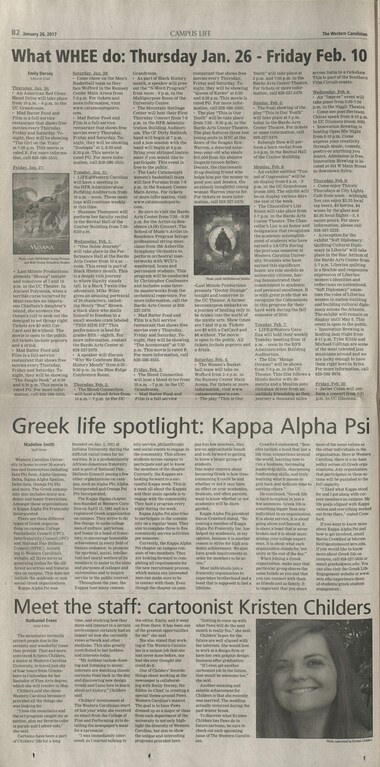




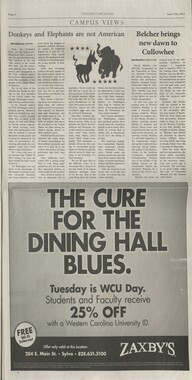
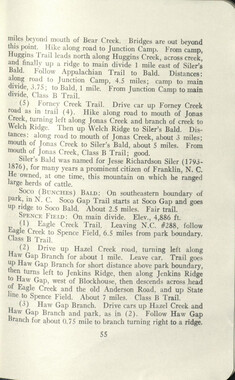
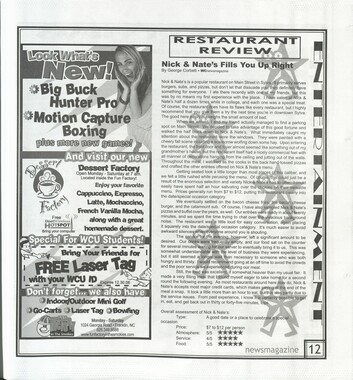
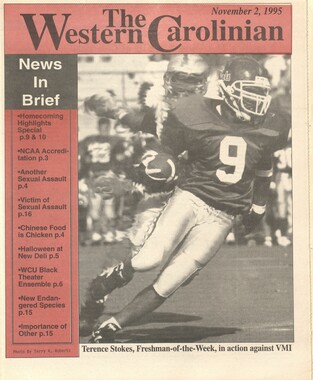
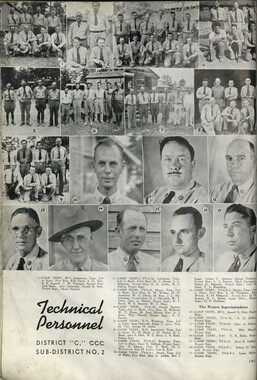
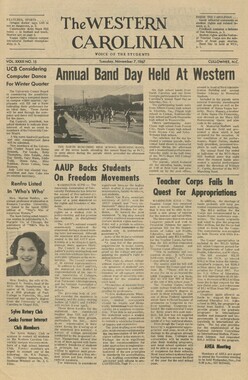
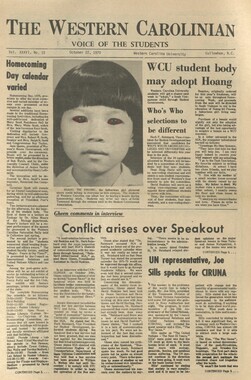
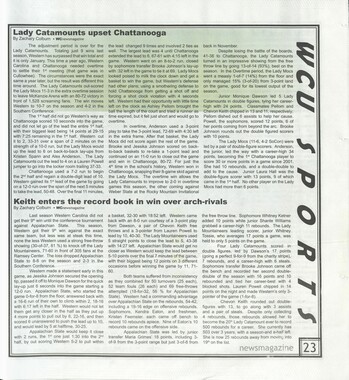
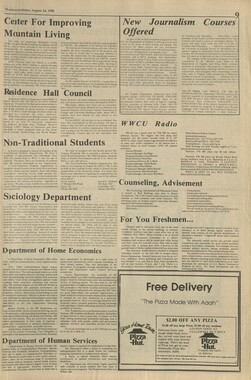
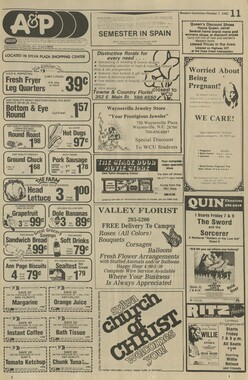
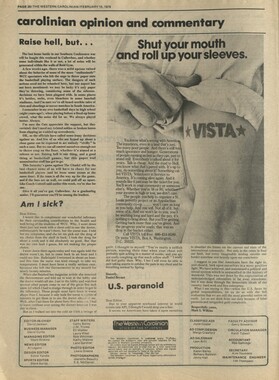
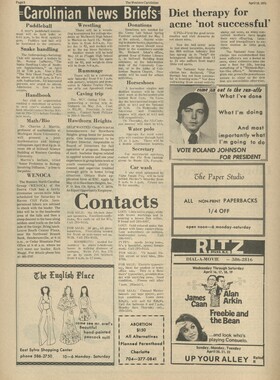
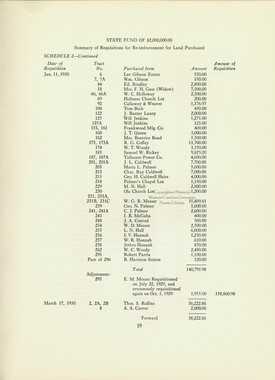
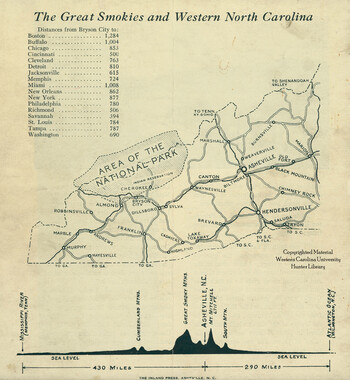

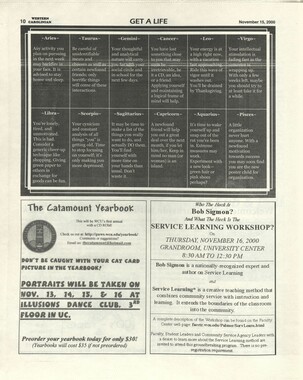
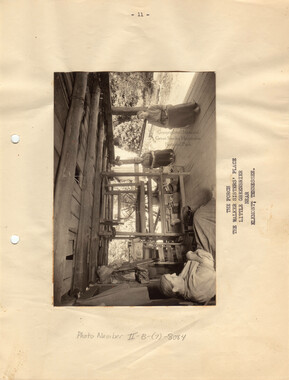
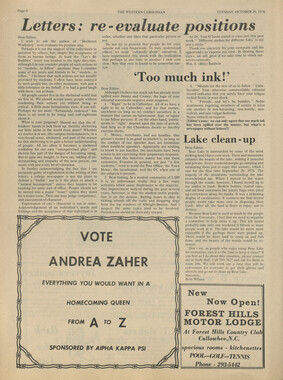
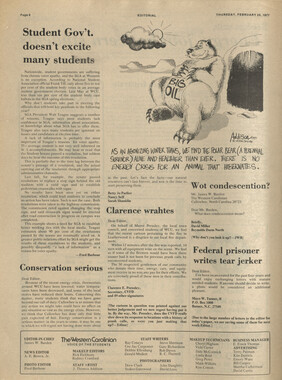
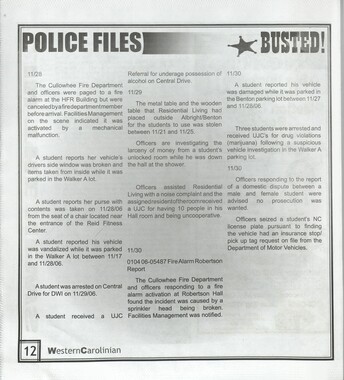
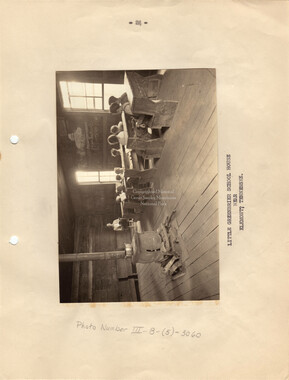
![hl_westerncarolinian_2004_[vol69_no03]_09.jpg](/media/w400h300/wcu_publications/hl_westerncarolinian_2004_[vol69_no03]_09.jpg)
